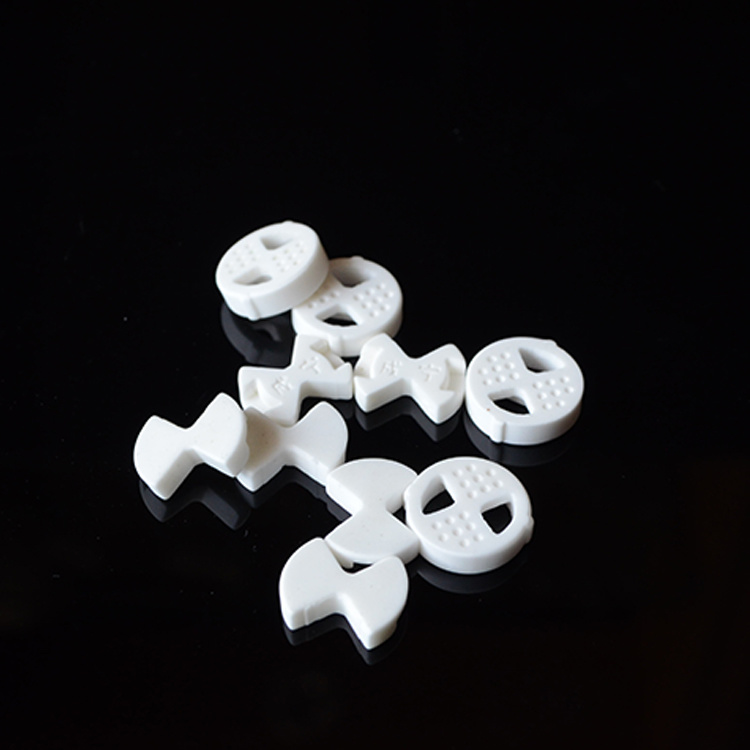
Magnesite Cupel: A Versatile Material for the Ceramic Industry
Time:
2023-10-16 11:20
Source:
Title: Unveiling the Versatility of Magnesite Cupel in the Ceramic Industry
Introduction: Explore the wide range of applications and advantages of magnesite cupel, an essential material in the production of superior ceramic products.
Magnesite cupel plays a significant role in the ceramic industry, particularly in the production of high-quality ceramic materials. This article will delve into the properties, functions, and applications of magnesite cupel, shedding light on its importance in the realm of construction and decorative materials.
1. Understanding Magnesite Cupel
Magnesite cupel is a specialized refractory material made primarily from magnesia (magnesium oxide). It possesses exceptional thermal resistance and chemical stability, making it ideal for various applications in the ceramic industry. With its high melting point and low thermal expansion, magnesite cupel is capable of withstanding extreme temperatures and thermal shock.
2. Benefits of Magnesite Cupel
2.1 Durability: Magnesite cupel exhibits excellent resistance to wear, corrosion, and thermal stress, ensuring a longer lifespan for ceramic products.
2.2 High Refractoriness: The material's ability to withstand high temperatures without deforming or losing its structural integrity is crucial in ceramic production processes, such as kiln firing.
2.3 Thermal Insulation: Magnesite cupel helps conserve energy by its superior insulating properties, minimizing heat loss during kiln firing and reducing fuel consumption.
3. Applications of Magnesite Cupel in the Ceramic Industry
3.1 Kiln Furniture: Magnesite cupel is widely used as kiln furniture, including setters, shelves, and saggers. Its exceptional thermal stability allows for uniform heat distribution, preventing deformation or damage to ceramic products during firing.
3.2 Crucibles and Molds: Magnesite cupel serves as a reliable material for crucibles and molds used in the shaping and casting of ceramics. Its durability and resistance to chemical reactions ensure the production of precise and high-quality ceramic components.
3.3 Insulating Materials: Magnesite cupel can be used in the production of insulating materials, such as thermal barriers and refractory coatings. These materials provide enhanced insulation, protecting ceramics from excessive heat and maintaining their structural integrity.
In conclusion, magnesite cupel is an indispensable material in the ceramic industry, offering exceptional durability, high refractoriness, and thermal insulation properties. Its versatile applications in kiln furniture, crucibles, molds, and insulating materials contribute to the production of top-notch ceramic products. Embrace the potential of magnesite cupel and elevate your ceramic creations to new heights of quality and longevity.
Introduction: Explore the wide range of applications and advantages of magnesite cupel, an essential material in the production of superior ceramic products.
Magnesite cupel plays a significant role in the ceramic industry, particularly in the production of high-quality ceramic materials. This article will delve into the properties, functions, and applications of magnesite cupel, shedding light on its importance in the realm of construction and decorative materials.
1. Understanding Magnesite Cupel
Magnesite cupel is a specialized refractory material made primarily from magnesia (magnesium oxide). It possesses exceptional thermal resistance and chemical stability, making it ideal for various applications in the ceramic industry. With its high melting point and low thermal expansion, magnesite cupel is capable of withstanding extreme temperatures and thermal shock.
2. Benefits of Magnesite Cupel
2.1 Durability: Magnesite cupel exhibits excellent resistance to wear, corrosion, and thermal stress, ensuring a longer lifespan for ceramic products.
2.2 High Refractoriness: The material's ability to withstand high temperatures without deforming or losing its structural integrity is crucial in ceramic production processes, such as kiln firing.
2.3 Thermal Insulation: Magnesite cupel helps conserve energy by its superior insulating properties, minimizing heat loss during kiln firing and reducing fuel consumption.
3. Applications of Magnesite Cupel in the Ceramic Industry
3.1 Kiln Furniture: Magnesite cupel is widely used as kiln furniture, including setters, shelves, and saggers. Its exceptional thermal stability allows for uniform heat distribution, preventing deformation or damage to ceramic products during firing.
3.2 Crucibles and Molds: Magnesite cupel serves as a reliable material for crucibles and molds used in the shaping and casting of ceramics. Its durability and resistance to chemical reactions ensure the production of precise and high-quality ceramic components.
3.3 Insulating Materials: Magnesite cupel can be used in the production of insulating materials, such as thermal barriers and refractory coatings. These materials provide enhanced insulation, protecting ceramics from excessive heat and maintaining their structural integrity.
In conclusion, magnesite cupel is an indispensable material in the ceramic industry, offering exceptional durability, high refractoriness, and thermal insulation properties. Its versatile applications in kiln furniture, crucibles, molds, and insulating materials contribute to the production of top-notch ceramic products. Embrace the potential of magnesite cupel and elevate your ceramic creations to new heights of quality and longevity.
magnesite cupel

